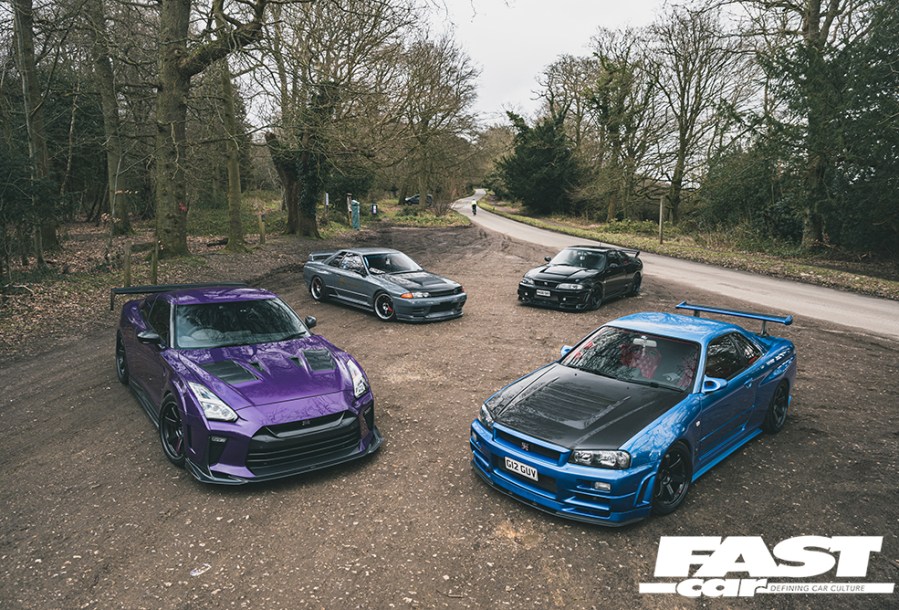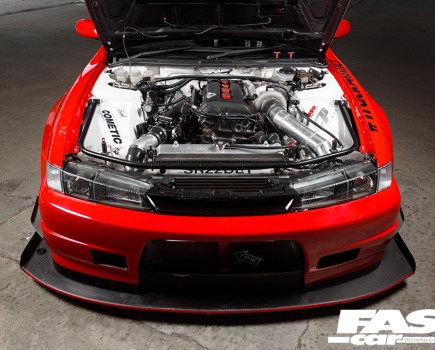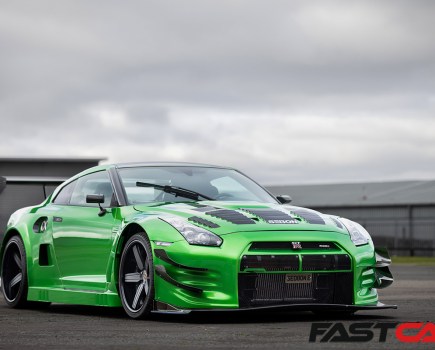The Nissan GT-R family of cars has dominated race circuits and kept tuners entertained for decades. Here’s your ultimate guide to the Nissan GT-R and Skyline predecessors.
Japanese performance cars have seen their values spike in recent years. But the Nissan GT-R badged cars have often been found right at the top of that classic Japanese car market boom, none more so than the Skyline GT-R. The reason why is a simple case of supply and demand. For many people, the Nissan Skyline GT-R is the ultimate JDM model, and that status brings a suitably hefty price tag with it.
Known for their clever all-wheel drive systems and highly tunable engines, they’re one of the most popular vehicles to modify, and for good reason. Each iteration of the Skyline GT-R and subsequent Nissan GT-R R35 can claim to be one of the best performance cars to come out of Japan, whether you leave it stock, or not.
Of course, over the years, plenty about the model has changed. The 1989 R32-gen car picked up where its Hakosuka and Kenmeri ancestors left off, offering sports car levels of performance in a package derived from a humble saloon. Nowadays though, that saloon DNA is firmly a thing of the past; the R35 GT-R being its own stand-alone supercar rival.
So, why are these cars so revered? Let’s take a quick tour through history to find out.
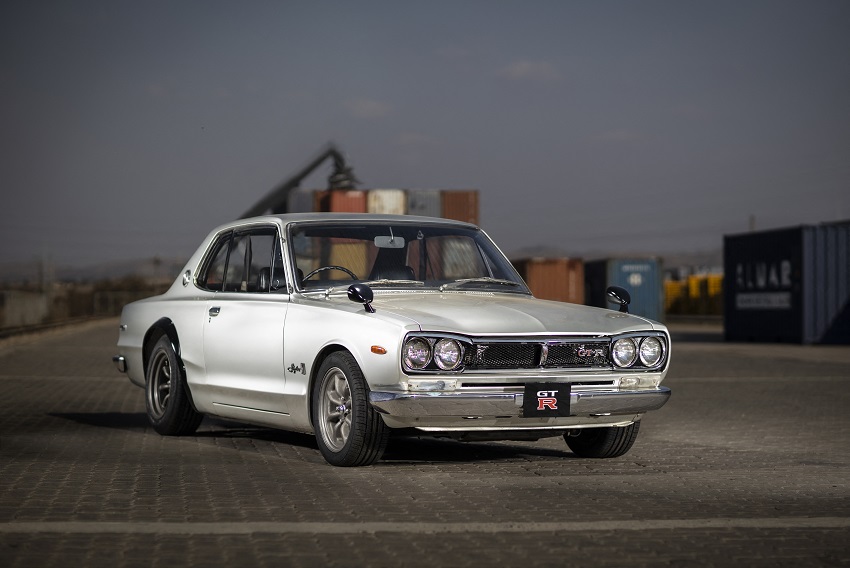
Where it all began: Nissan Skyline 2000 GT-R ‘Hakosuka’ (1969-1972)
The ‘Hakosuka’ is where the Nissan GT-R story begins. Following a merger with fellow Japanese car marque Prince, Nissan nabbed Prince’s Skyline sedan model. It then slapped a Nissan badge on its newly prepared successor. However, the Skyline wasn’t just any old inherited family saloon. The Prince motor company was a regular entrant into Japan’s most prestigious races. In the past it had used earlier Skyline models to take on Porsche – and win! Happily, that tradition of sporting prowess trickled through to the reborn Nissan-branded Skyline when it debuted in the late sixties.
Nicknamed ‘Hakosuka’, or ‘Boxy Skyline’ in English, a special high-performance variant of the car – known as the 2000 GT-R – arrived in 1969. The idea was simple. Build a vehicle that was at home on both the city streets of Saitama, and at Suzuka race circuit.
To achieve this, Nissan turned to a man named Shinichiro Sakurai. Sakurai-san had led the development of a Prince racecar know as the R380. Unheard of over here, the R380 was a coupe-style prototype that won the 1966 Japanese Grand Prix. I guess you could think of it as Japan’s answer to the Ford GT40. Nissan decided that the same 2.0-litre straight-six from the R380 should go in the Skyline GT-R. So, who better to task with the job than the man who originally designed it? A detuned engine made its way into the road car, but the rest, as they say, is history.
In stock form, the Hakosuka GT-R’s ‘S20’ engine redlined at 7500rpm. It kicked out 170hp, which felt rather lively in 1100kg car in 1969. What’s more, it also featured a five-speed manual gearbox and rotor brakes (rather than drums) at the front – all of which was rather high-tech for the late 1960s.
The GT-R Coupé arrives
Then, in 1971, the GT-R’s four-door silhouette switched to a two-door coupe body style. These new and improved cars came equipped with wider tires, a wider track width, and shorter wheelbase. On top of that, a boot lid spoiler came as standard too. These evolutions helped the GT-R to maintain its early dominance on the race circuit. This culminated in more than 30 consecutive race wins over an 18-month period.
Naturally, sales on dealer forecourts followed these sporting successes. However, still only around 2000 examples of the Hakosuka GT-R were ever built, so today they’re considered a highly valuable classic. As such, most modified versions are kept very tasteful, much like this one.
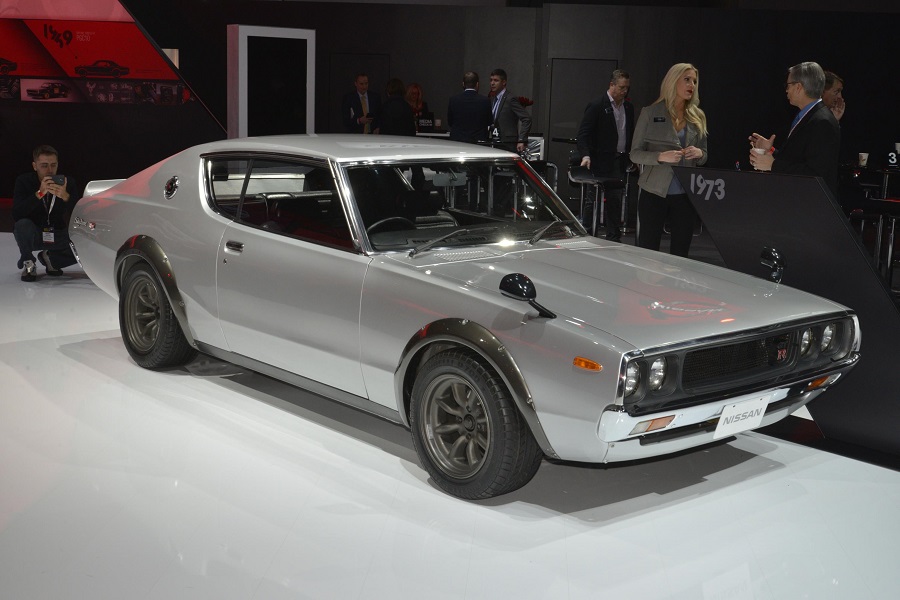
Nissan Skyline 2000 GT-R ‘Kenmeri’ (1973)
By 1973, the Nissan Skyline GT-R had a very different look. A development of the coupe silhouette that the Hakosuka ended with, the next generation of GT-R emulated its sporty Stateside counterparts by incorporating a fastback rear end. A slightly more luxurious interior was another nod to the American market influence in the second-gen GT-R’s future. This was something that became pretty evident in the car’s advertising campaign, which centered around a fictional young Western couple called Ken and Mary. So, if you’re wondering where the ‘Kenmeri’ nickname comes from, it’s as simple as that.
Sadly, the oil crisis put an end to the GT-R’s American dream. In fact, stricter emissions regulations nearly wiped out the Kenmeri Skyline entirely. But happily, before Nissan pulled the plug on it, 197 GT-R examples did make their way into the hands of customers. Nevertheless, if Hakosukas are rare, then the Kenmeri is on a whole other level of scarcity. That’s a shame really, because on paper the Kenmeri GT-R makes for an interesting vehicle.
Kenmeri Specs
It retained exactly the same ‘S20’ straight-six as found in the Hakosuka. As well as the accompanying five-speed manual gearbox and limited-slip differential. Similarly, four-wheel independent suspension was another feature carried over between the two cars. However, unlike the Hakosuka, the Kenmeri benefitted from disc brakes all-round, which should’ve made a big difference on the track. That said, the Kenmeri was also a little bit heavier than the Hakosuka in roadgoing form, so it would’ve been interesting to see how the two cars stacked up against each other in reality.
Unfortunately, there wasn’t much opportunity for such comparisons, as Nissan’s motorsport division stopped; its resources and manpower having to be spent on developing new emissions-related tech instead. In fact, with the Kenmeri GT-R canned after just six months on sale, the world waited another 16 years for another GT-R.
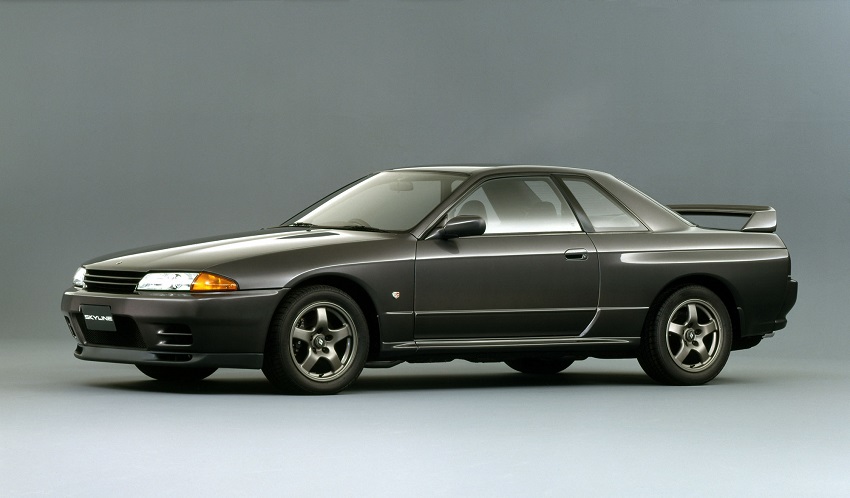
Nissan Skyline GT-R R32 (1989-1994)
If you’re going to do a reboot, you’ve got to make sure it’s good. With hindsight, it seems almost silly to have worried about whether or not the R32 Skyline GT-R would live up to its badge’s billing. However, there were certainly question marks hanging over the car in the build up to its launch.
Since the Kenmeri, Nissan had built further sporting variants of its Skyline models, like the R31 GTS-R. But none bore the GT-R name. None of them lived up to the Hakosuka’s legacy either. If Nissan was to finally revive the GT-R moniker, its engineers knew that they’d have to step things up. Illness meant that Nissan could no longer rely on Shinichiro Sakurai to deliver the goods. Instead the task went to his understudy – Naganori Ito. Ito-san had headed the development of the outgoing R31. Given the car’s mixed reception, the pressure was on to get the R32 right.

Introducing the RB26DETT & clever AWD system
If he was going to do the GT-R name justice, Ito-san knew that it had to perform on track. An upgraded engine was therefore high on his to-do-list. The R32 became the first GT-R equipped with the now-legendary RB26 motor. This was effectively a twin-turbocharged, bored-out version of the existing 2.0-litre RB block used in the previous car. However, it now had a capacity of 2.6 liters, and an official power output of 276hp. I say ‘official’ because at the time Japanese marques were bound to a so-called ‘Gentleman’s agreement’. This meant that none of their road cars would exceed that figure. In reality though, the R32 GT-R was producing something closer to the 310hp-mark.
The engine wasn’t the R32’s only party trick though. Instead, that was its all-wheel drive system. Known as ATESSA E-TS, the car’s electronic system could vary how much torque was sent to each axle. Compared to its biggest rivals – all of which were RWD – the R32 GT-R had a major traction advantage.
On the racetrack, this translated into a form of dominance that not even the Hakosuka could claim to have achieved. Between 1989-1993, the R32 GT-R won every single professional race it entered in Japan. It caused quite a stir in Australia too. In fact, the Aussies got so tired of the exotic Nissan trouncing their domestic Fords and Holdens that they brandished it with the beastly ‘Godzilla’ nickname. Not intended as a compliment, the Godzilla title was quickly claimed as a badge of honor.
Pros of the Nissan Skyline GT-R R32
- Highly capable RB26 motor
- ATESSA-ETS all-wheel drive
- Now legal to import to the US
Cons
- Potential for rust
- Cheap interior
- Lots of modified examples to be cautious of
Common Problems
- Oil pump failure
- Stock turbo failure
- Faulty HICAS system
Nissan Skyline GT-R R32 prices
If you want to get your hands on one of these beasts from the east, you’ll need a sizeable chunk of cash. Prices in the UK start at around £35,000, and stretch up to £50,000 for lower mileage examples. That said, special tuning shop variations can fetch closer to £85,000, while the most sough-after garage queens can cost you six figures. Stateside, it’s a similar story. Our American readers should look to pay between $45,000 – $60,000 for one, depending on mileage, condition and modification status.
How to buy and tune a Skyline R32 GT-R
It goes without saying that the R32 was just as good a road car as it was a race car. Thankfully Nissan got to make quite a few more of them than the original Hakosuka and Kenmeri. If you’re thinking of buying one second-hand, be sure to check out our dedicated buyer’s guide. Or, if you’d like some advice on how to tune your R32, we’ve got a tuning guide for that as well. There’s also a vast array of modified examples for you to check out. So go on, dive in!
And if you love Japanese classics as much as we do, then get yourself to our inaugural Classic Japfest event this October 6th at Goodwood Motor Circuit.
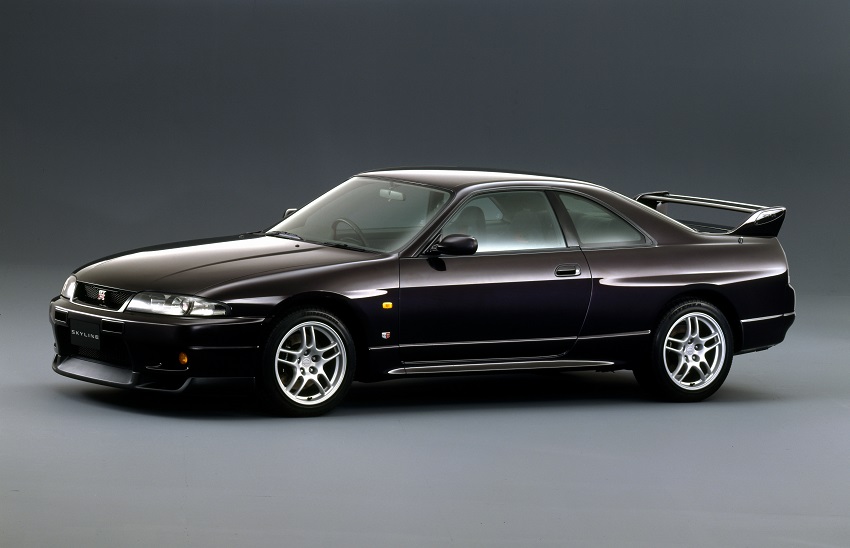
Nissan Skyline GT-R R33 (1995-1998)
Compared to both the R32 and the R34 that succeeded it, the R33 doesn’t tend to get as much love. So why is that?
Well, it’s not because the R33 is a bad car. Instead, it’s mostly down to the fact that Nissan altered a key part of the GT-R’s identity: its size. The R32 had a reputation for being a sporty, nimble car, and so when Nissan decided to extend the Skyline’s wheelbase for the R33 (and add 80kg), people feared that the GT-R was heading down the wrong direction. Even today, nearly 30 years later, you’ll hear similar criticisms voiced about it. At the time, concerns were hardly eased in the form of motorsport either, as although the R33 did achieve success (in a highly modified form) in Japan’s Super GT Championship, it lacked the international sporting credibility that the R32 had built for itself.
Nevertheless, if you were to actually get behind the wheel of one, you probably wouldn’t understand what the fuss was all about. Sure, it was a bit bigger and a bit heavier, but it was still unmistakably a GT-R. In fact, in many ways, it was better.
The ATESSA E-TS four-wheel drive system received a handful of upgrades which ultimately enabled it to react quicker to its environment. Plus, despite the increase in dimensions, the sleeker styling of the car meant that it was more aerodynamic than the R32 as well. The much-loved RB26 powertrain remained under the hood, but again, in slightly better shape than it had been before. For example, whereas the R32 was occasionally criticized for having weak oil pump auxiliaries, this was addressed in the R33. Similarly, a strengthened five-speed manual gearbox arrived.
Nissan Skyline GT-R R33 special editions
If the standard R33 GT-R simply wasn’t to your liking, you were in luck, as the tradition of having multiple trim levels and special editions was another feature that continued on from the R32 days. The most common of which is the V-Spec, or ‘victory-spec’, a variation of the GT-R marking the R32’s success on the track. In this guise, the R33 sits lower than it does as standard, thanks to uprated sports suspension, meanwhile the ‘Pro’ version of the ATESSA system was also fitted for even better roadholding.
Next up there were the N1 models. These Nürburgring specials were perhaps the most hardcore of the initial R33 package options, as ABS, air conditioning, and plenty of other creature comforts were all thrown in the bin in the name of weight saving.
However, if you ignore the GTR-LM (and we’re going to, since there’s only one roadgoing version in existence), the pinnacle of the R33 family tree was the NISMO 400R. Introduced in 1995, the 400R came equipped with a 400hp version of the RB26 engine, as well as a refined cooling system, beefier brakes, and fruitier exhaust. The exterior of the car also got the NISMO treatment, adding aggression to its sleek lines without going overboard.
It’s best not to think about how much a 400R would cost you in the present day though, so instead if you want the R33 to live up to its reputation as being the ‘cheapest used Skyline’, you’re better off setting your sights on a V-Spec. Though, admittedly, whichever R33 you’re after, prices do seem to be catching (and in many cases, overtaking) the prices attributed to equal R32 examples. A trend to keep an eye on, perhaps.
Pros of the Nissan Skyline GT-R R33
- More torque than an R32
- Enhanced ATESSA E-TS all-wheel drive compared to R32
- Now legal to import to the US.
Cons
- Potential for rust
- Considered big & bulky compared to R32 & R34
- Cheap interior
Common Problems
- Knocking sound from the rear differential
- Leaky steering rack seals
- Worn track rod ends
Nissan Skyline GT-R R33 Prices
These days, it appears as though the market has begun to see through the amplified negative discourse around the car, as prices seem to be on the rise. Until recently, the R33 was arguably more affordable than the R32, however that’s no longer true. In the US, you’re looking at starting prices of around $45,000, but the average figure is closer to $65,000. The most desirable, rarest examples are now well into six-figure territory. In the UK, £50,000-£60,000 is the sort of money that an average car would dictate.
How to buy and tune a Skyline R33 GT-R
If you’re serious about getting your hands on one of these, check out our R33 buyer’s guide. Or, if you’ve already got one and now want to start modifying it, give our R33 tuning guide a read instead. There’s also a number of feature cars on the site to give you some inspiration. While it may lack the ultimate street cred of the R32 or R34, the R33 nonetheless remains a brilliant canvas for tuning.
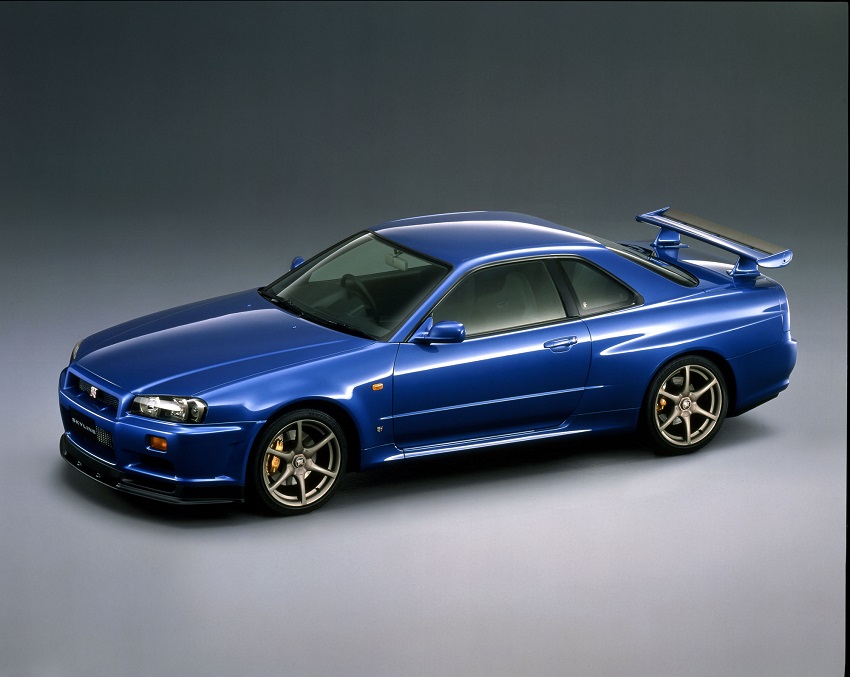
Nissan Skyline GT-R R34 (1999-2002)
If you’re of a certain age, this is the car that’ll spring to mind when you’re asked to visualize a Nissan Skyline GT-R. The R34 was much more present in Western pop culture than any of its predecessors. It took star roles in PlayStation’s Gran Turismo video games, and Hollywood’s Fast & Furious franchise. In fact, its presence on our living room TV screens did far more for the car’s reputation than a successful motorsport history. And that’s just as well, as the R34 was rarely seen on a racetrack outside of Japan.
That said, don’t go thinking that this car was simply a PR masterclass. There was a reason why it was handed so much respect in the media. It had the performance and stature to warrant the attention.
For a start, Nissan went back to the drawing board to address the styling complaints that many prospective buyer’s raised about the R33. The result left the R34 with a shorter, boxier silhouette that was reminiscent of the R32. Weight was also kept to a minimal increase. This meant that in the minds of GT-R customers, two important boxes were already ticked before they had even gotten behind the wheel.
Last Hurrah For RB26DETT
Once they did take to the driver’s seat though, their smiles would’ve only grown wider. The R34 was to be the last hurrah for the beloved RB26 engine It was only fair that it received further enhancements for its send-off. The twin turbos made use of ball bearing architecture. This in turn improved reliability and decreased spool time. Overall, power now unofficially stood at 320hp, without harming the block’s bulletproof reputation.
To go along with that extra oomph, Getrag developed a six-speed gearbox. This would replace the old five-speed manual transmission, while Brembo increased the size of the GT-R’s brake discs.
Naturally, more goodies came with the limited-edition variants. The V-Spec, for example, once again benefitted from ATESSA ETS-Pro’s electronic differential. In fact, the V-Spec was the only R34 model officially sold in the UK. If you find one of those British cars, you’ll notice that it also comes equipped with leather seats, stiffer suspension, and three more oil coolers. The ECU also features reprogrammed settings. This is in order to deal better with the climate and road conditions in this country.
Nissan Skyline GT-R R34 special editions
The stripped back N1 trim level made its return as well. On the other end of the spectrum, M-Spec introduced a more comfortable, laid-back persona to the GT-R.
However, as was the case with R33, the ultimate R34 was built by the likes of NISMO. Known as the Z-Tune, these 20 unicorns were all built atop converted donor cars. They featured a bigger 2.8-litre version of the RB26, while carbon fiber was also used in swathes to reduce weight. As such, the Z-Tune is the holy grail of all Skyline GT-Rs, let alone the R34.
Pros of the Nissan Skyline GT-R R34
- Most desirable iteration of GT-R
- Most advanced standard iteration of the RB26 motor
- Six manual gears rather than five.
Cons
- Potential for rust
- Prices for these have boomed
- There are several dressed-up GTTs floating around – don’t get caught out!
Common Problems
- Fried coil packs & split vacuum lines
- Popping out of gear (especially in first)
- Faulty LCD display
Nissan Skyline GT-R R34 Prices
In 2023, original R34 GT-Rs don’t sell for less than $/£100,000, assuming they’re in working order. In fact, the market is so variable depending on anything from mileage, to color, to spec, that you could be looking at prices anywhere between $/£125,000-$/£180,000. It’s certainly not unheard of for the $/£200,000 barrier to be breached in special cases, while the rarest, most legendary specifications are getting perilously close to half a million. Technically, the R34 GT-R still isn’t quite legal to import to the US (although the earliest 1998 examples will be), yet that’s not to say you won’t see any there. Again, expect similarly ludicrous prices.
If you’re interested in just how expensive Skyline GT-Rs can be, check out our list of the most expensive Skyline GT-Rs ever sold!
How to buy and tune a Skyline R34 GT-R
These days though, even a V-Spec is likely to set you back in excess of $100,000. If you’ve got that sort of cash lying around, feel free to check out our R34 buyer’s guide. Plus, if you want to read our hands-on review of the car, you can do so here. Looking to modify one? Check out our R34 tuning guide for all the info you’ll need.
As you can imagine, there’s plenty of modified R34 feature cars for you to cast your eyes over on the site as well.
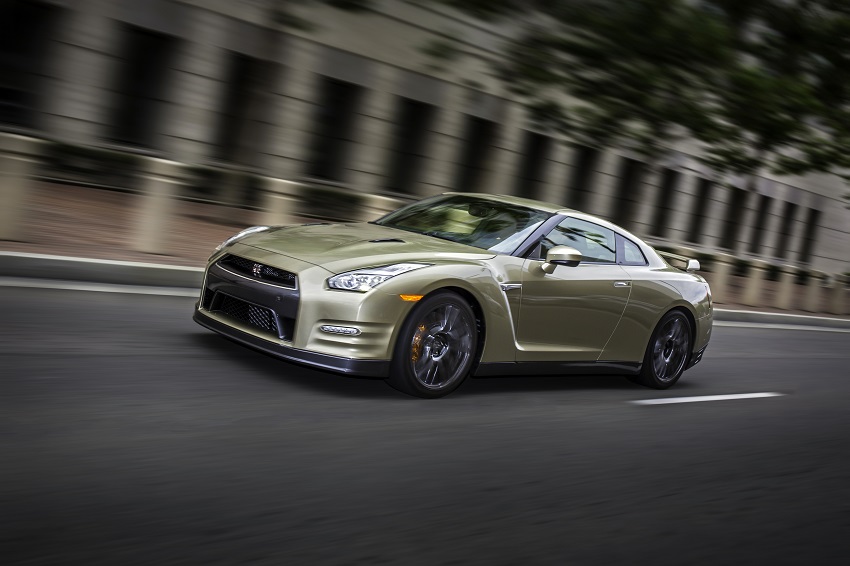
Nissan GT-R ‘R35’ (2007-Present)
Ok, technically speaking, this isn’t a Skyline at all, but it most definitely is a GT-R. The R35 marked a split between the Skyline and GT-R nameplates, perhaps because Nissan felt that to take the GT-R to the next level, they’d have to leave its humble family sedan DNA behind. Instead, the R35’s bespoke platform straddles the divide between sports coupe and all-out supercar, thanks to a spec sheet as nerdy as Professor Frink.
For example, the nitrogen-filled tires were a much-spoken about element of the R35 upon its launch, such was the nitty gritty detail that had gone into its R&D. The car also boasted impressive-sounding features such as carbon-composite crossmembers, while a hermetically sealed lab housed the engine build… whatever that means. What an engine it was, too. Designated the ‘VR38-DETT’ code, its six cylinders shifted from an in-line orientation to a ‘V’ position, while capacity now stood at 3.8 liters. The twin-turbo idea stuck around from previous GT-Rs, but as the Japanese gentleman’s agreement had been cast aside by 2007, Nissan could now proudly laud the VR38’s 480hp in an official capacity.
In a bid to show off the new GT-R’s capabilities as much as possible, it wasn’t long before the R35 arrived in motorsport. Like previous iterations, it felt right at home in the Japanese Super GT championship, however the R35 also marked Nissan’s return to elite international racing as well. German duo Michael Krumm and Lucas Luhr would drive the car to outright glory in the 2011 FIA GT1 World Championship, while a successful GT3 program would follow suit.
Those race cars were rear-wheel drive in order to fit their respective championships’ regulations, but the GT-R’s staple ATESSA all-wheel drive system remained in place for the roadgoing version.
Nissan GT-R R35 updates
Already the most mechanically advanced GT-R ever built when it debuted, Nissan never quite managed to stop tinkering with the R35 over the next decade of the car’s (unusually long) lifespan. The first major facelift arrived in 2011, when revised engine architecture and ECU mapping boosted the VR38’s output to 530hp, alongside a stiffer chassis. Then just two years later, power increased again; this time to 544hp, while the suspension was also reworked. Finally, in 2017, the R35 GT-R got a light visual facelift at the front, smoother transmission, and an engine which now kicked out 565hp. Beyond the changes made to the base model, there was also a plethora of limited editions built along the way. In fact, there’s simply too many to cover all of them here.
The most important special editions, however, were arguably the Spec V (for old times’ sake) and the GT-R NISMO. The 2009 Spec V was an homage to the V-Spec cars of yesteryear, and featured a sprinkling of extra engine torque, as well as a weight-loss program that ensured it remains one of the lightest R35 GT-R variants to date. The NISMO edition, meanwhile first arrived in 2013, but got an update in 2020.
The latter version of the car adds more aggressive aero and red trim to the facelifted bodywork, as well as the same turbochargers found in the aforementioned GT3 racecar. Its carbon ceramic brakes are the largest ever fitted to a GT-R, and plenty of carbon was also used in its reworked bodywork to keep weight down. Nissan claims that this means the GT-R NISMO can accelerate to 60mph in less than three seconds, while top speed sits at around the 200mph-mark.
Pros of the Nissan GT-R R35
- Supercar levels of performance
- All the GT-R fun with added modern interior tech and design
- Widely available around the world
Cons
- Supercar speed means near-supercar prices
- Very sensitive to alignment & geometry
- Factory paintwork is weak
Nissan GT-R R35 Common Problems
- Noisy rear differential
- Transmission damage from launch control abuse
- Cracked rotors/discs from lead-footed brakers.
Nissan GT-R Prices
As far as prices go, well, the market for this car is just as wide-ranging as its spec sheet over the years. Early high mileage cars cost around $60,000, while low-mileage, newer cars sell for R34-rivalling prices; up to around $140,000 for something fairly close to standard, or nearer $190,000 for super-modified 1000PS beasts. Of course, there are still new and nearly-new examples up for sale in the US as well, while a facelift model is due in 2024. At the moment, fresh ’23 plate GT-Rs have a starting MSRP of $113,000, though with the current state of dealer mark-ups, don’t be surprised to see them sell for much higher figures in reality.
Over in the UK, the R35 is no longer on sale, so you’ll be restricted to the second-hand market. Happily though, prices are a little more down to earth. Entry-level examples can be picked up for £35,000, though the market does stretch up to and beyond £100,000 the newer and rarer you go. Recently, one of the UK’s most powerful R35 GT-Rs went up for sale for almost £200,000, though this featured an engine capable of almost 2,500bhp. As an aside, that car can complete the quarter-mile in 7ish seconds with a trap speed of near-as-dammit 180mph.
How to buy and tune a Nissan GT-R R35
Given how long the R35 GT-R has been around, we could go on and on, however for all the key bits of information you need about buying one, check out our dedicated buyer’s guide. And, as ever, be sure to take a look at some of our R35 feature cars. If you need advice on modifying one, have a read of our R35 GT-R tuning guide.
The future is almost certainly electric for the GT-R nameplate, but thanks to this lineage of six-cylinder heroes, its legacy amongst tuner culture will last forever.
Already got a Skyline or GT-R of your own that you want to tune? Check out these articles next:
- Best Modified Nissan Skyline GT-R feature cars
- Best wheels for a GT-R
- Best suspension for a GT-R
- Best exhaust for a GT-R
- Best air filter for a GT-R
Want to see some of the finest Nissan Skyline GT-Rs on display at an iconic venue? Then you’re in luck. Not only will you have the opportunity to ogle over modified Skyline GT-Rs, but Goodwood Motor Circuit will be filled with the finest Classic JDM cars, too. Be sure to check out our premier Classic Japfest event right here.

